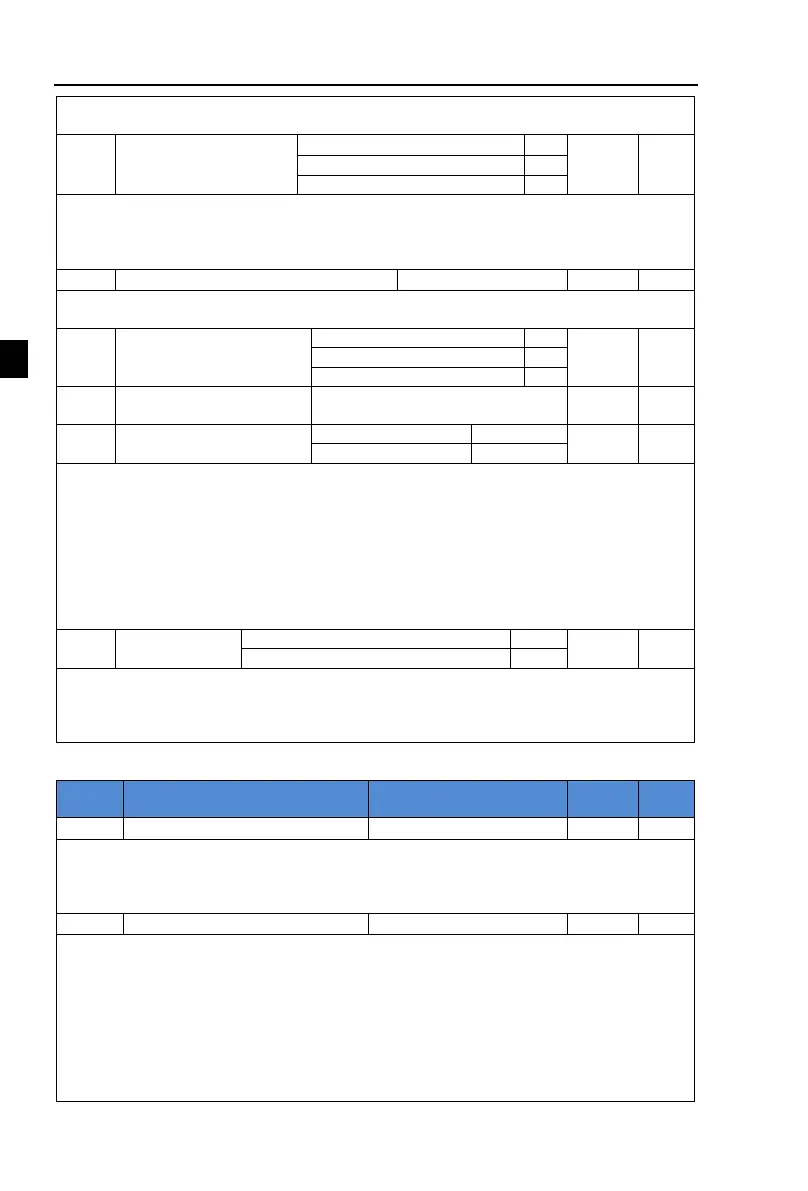Chapter 5 Function parameter
90
factory defaults, the new parameter setting takes effect. If it is higher than factory defaults will
be the standard value.
Deadband compensation
mode selection
Generally do not need to modify this parameter, only when the special requirements to the
output voltage waveform quality is required or when the motor oscillation and other abnormal
happen, you need to try to switch to select a different mode of compensation.The compensation
mode 2 for high-power is recommended.
Current detection compensation
Used to set the inverter's current sensing compensation, if the set value is too large, which
may reduce the control performance. Generally do not need to be modified.
Vector optimization
without PG mode selection
Upper limiting frequency
for DPWM switching
Only valid for V/F control. Synchronous modulation refers to that the carrier frequency
linearly change with the change of output frequency, in order to ensure the unchanged of their
ratio(Carrier to noise ratio), generally it is used when the output frequency is higher, is
conducive to ensure the output voltage quality.
Under the lower output frequency (100Hz) mode, generally the synchronize modulation is
not required, because at the time the ratio of the carrier frequency to the output frequency is
relatively high, the asynchronous modulation has more obvious advantages.When the operating
frequency is higher than 85Hz, the synchronous modulation takes effect, the fixed mode is the
asynchronous modulation below the frequency.
PWM carrier frequency random depth
By setting Random PWM, the monotonous and shrill motor sound can become softer and
which helps reduce external electromagnetic interference. When Random PWM Depth is set to
0, Random PWM will be invalid. It will get different results by adjusting different Random
PWM Depths.
5-2-14.FC group Extended parameter
Proportional linkage coefficient
When proportional linkage coefficient is 0, proportional linkage function can not
work.According to the setting by proportional linkage, communication address of master
(F9.02) is set to 248, and communication address of slave is set to 1 to 247.Slave output
frequency = Master setting frequency * Proportional linkage coefficient + UP/DOWN Changes.
If the absolute value of deviation between PID setting source and feedback source is
greater than of the parameter, the inverter starts only when PID output frequency is greater than
the wake-up frequency to prevent the repetition of the inverter starts.If the inverter is operating,
when PID feedback source is greater than setting source and the output frequency is less than or
equal to (F7.48) sleep frequency, the inverter goes to sleep after (F7.49) delay time and
performs free stop.
If the inverter is in the state of sleep and the current run command is valid, the absolute
value of deviation between PID setting source and feedback source is greater than of PID start
deviation (FC.02), when PID setting frequency is greater than or equal to F7.46 wake-up

